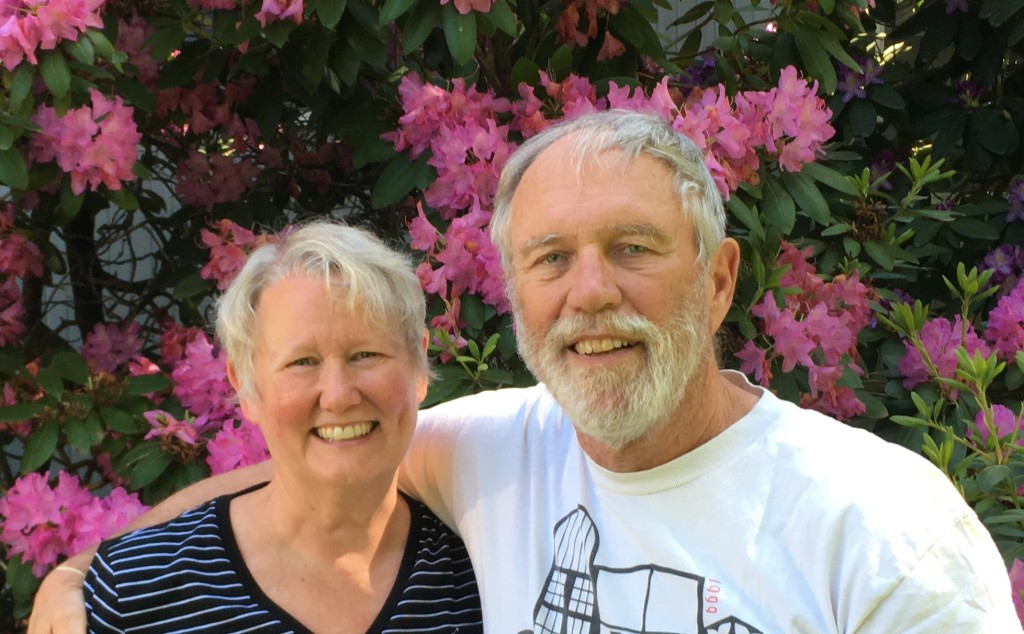Kay O’Neil MCRP ’78 and David Nelson MCRP ’78 Find Love, Give Back at the GSD
 Statistical analysis and love don’t usually go together, but Kay O’Neil MCRP ’78 and David Nelson MCRP ’78 have found success with this unique pairing.
Statistical analysis and love don’t usually go together, but Kay O’Neil MCRP ’78 and David Nelson MCRP ’78 have found success with this unique pairing.
The couple, who met at the Harvard University Graduate School of Design (GSD), have been together for 42 years. They are thankful to the GSD both for the foundational skills it provided in city and regional planning and for bringing them together. To formalize that gratitude, Kay and David have provided a generous gift to the school through their life insurance policy.
“Harvard has always been training talented people in a way that will allow them to make changes and contribute to society in remarkable ways,” David said. “We were very happy at the GSD, and we’ve been very happy together for the last 42 years. It was a wonderful experience, and we want others to have it.”
Kay and David’s journeys toward their GSD experience date back to their childhoods. Kay grew up in Northwoods, the first planned unit development in the state of Georgia. The neighborhood, which is now on the National Register of Historic Places, informed what she thought a community should be. “It was very accessible for kids,” she said of Northwoods, which also had its own elementary school. “We had the run of the entire community.”
In high school, Kay heard a presentation about planned communities, which solidified her ambition to become a city planner. She received her undergraduate degree in urban planning at Michigan State University before coming to Harvard and the GSD for her master’s degree in city and regional planning.
At the GSD, she attended her quantitative analysis classes, where she saw a classmate that often questioned the faculty on statistical approaches. She saw him again at a Halloween party, where Kay’s friend said, “Oh, that’s David Nelson. He’s always challenging the professor.”
“She said that, and I thought, ‘Well, he’s always right!’” Kay said with a laugh. “We ended up studying together, and we both liked going for ice cream in the afternoons, and soon one thing led to another.”
“When I arrived at Harvard, I was a bit of a pain to the faculty,” David said, acknowledging that some of his professors were only a year or two older. He had spent time in high school working with his father, a municipal public works manager, and became interested in the public service element of forming the built environment. Studying sociology at Bates College led to a fondness for data and statistics. After a couple of years away from school, he applied to Harvard “on a wing and a prayer.”
“It’s still a huge honor,” David said of his graduate alma mater. “Everybody wants to go to Harvard, and nobody figures they can get in. I arrived there intimidated and confused, but two years later, I came out more confident.”
“I first noticed Kay in the lobby at Gund Hall waiting for a ride, and she gave me the biggest smile. I said to her, ‘You’re the girl in stats class.’ We became fast friends. And now here we are, 42 years, three children, and two grandchildren later.”
Both Kay and David went on to careers in public transit, focusing on subways and commuter railroads. Kay credits the GSD with providing the confidence and skills she needed to launch her own company, KKO and Associates, in 1984. That company, which David also worked for, offered software and planning structures for public transport and commuter rail systems domestically in cities like Boston, New York, Chicago, Philadelphia, Los Angeles, and Miami, as well as overseas in countries like Poland, Argentina, and South Africa.
“When we were at the GSD, it was an egalitarian program with a lot of women,” Kay said. “I went to work in the railroad industry, which is male-dominated. But I had come out of Harvard believing I could do anything I wanted.”
Kay closed the company in 2015 and now works for Keolis, a French company that operates the Massachusetts commuter rail system. David is at a large engineering firm, working with cities like Toronto, Miami, Boston, Philadelphia, and New York, on their ambitions for expanding public transit. He has also spent the last 10 years teaching a once-a-year graduate course in Paris about the railroads.
As a way of giving back to the educational institution that they say formed their lives, Kay and David named the GSD as a beneficiary of a life insurance policy they established. The couple pays a premium to a charitable foundation, which purchases and holds the life insurance policy for them, and Kay and David designate the beneficiaries and amounts. This planned gift makes them members of the H. Langford Warren Society, and they also give to the GSD as members of the Josep Lluís Sert Council.
“When earning money, you can make relatively modest contributions; when you’re gone, the money goes to your designated charities and philanthropic interests,” David said of the policy.
I couldn’t have gone to Harvard without financial aid. It’s important to us to give back and give forward so that people who might find attending Harvard a challenge can have that opportunity. The students are interesting, fascinating people.
“I couldn’t have gone to Harvard without financial aid,” Kay said. “It’s important to us to give back and give forward so that people who might find attending Harvard a challenge can have that opportunity. The students are interesting, fascinating people.”
This giving mechanism provided a simple, impactful way for Kay and David to support the passion, engagement, and initiative of GSD students—qualities that the two of them have carried forward in the four decades since leaving campus.
“As the twig is bent,” David said, “so grows the tree.”
